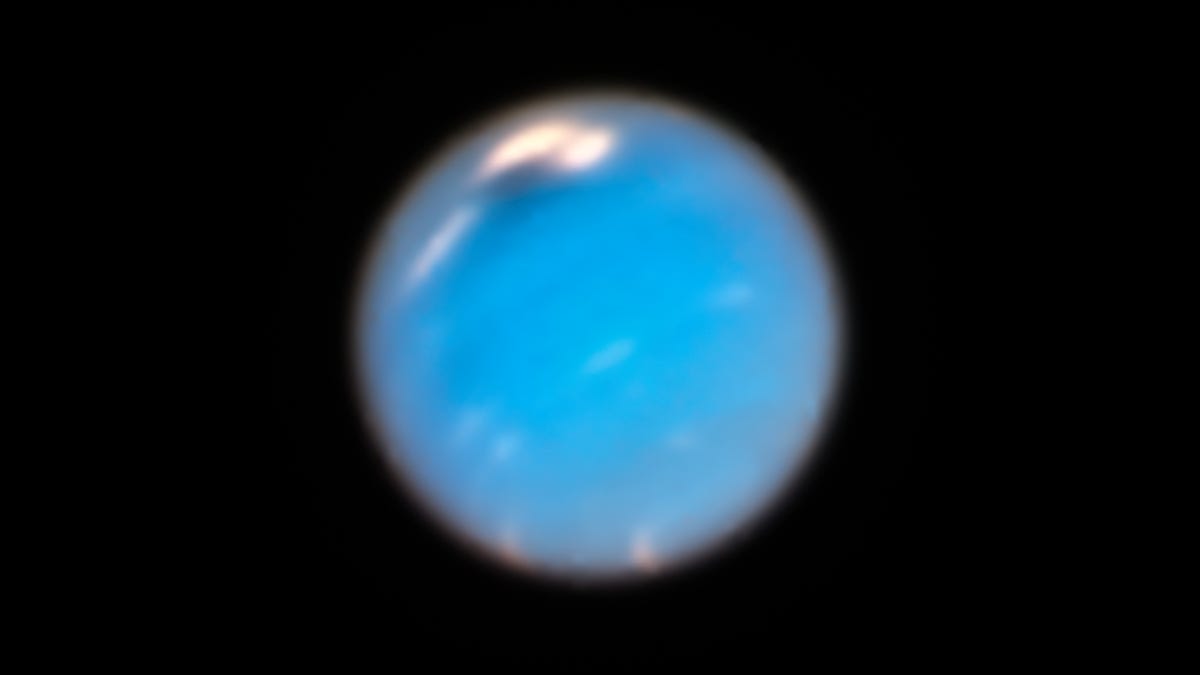NASA spots 'mysterious dark vortex' on Neptune
Storms-a-brewin' on the distant icy planet while Uranus is covered in a polar storm.

The icy, blue planets at the edge of our solar system are offering up their stormy secrets as they go through extended summer seasons.
NASA's Hubble Telescope nabbed new images of the two giant planets in September and November 2018. The snaps show both planets bathed in their vivid blue hues, caused by atmospheric methane, but also highlight huge storms dominating the planet's northern hemispheres.
On Neptune, a 6,800-mile (around 11,000-kilometre) wide storm is visible. The dark patch rests next to a number of bright white "companion clouds", as NASA calls them. The "mysterious dark vortex" has been snapped a number of times in the past. When Voyager 2 zipped past in 1989 it noticed two storms and Hubble has been watching the planet since launch in 1990. Since 1993, it's spotted three other storms brewing over Neptune.
Scientists aren't sure what causes the dark vortices to form on the solar system's fourth-biggest planet. However, NASA notes that in 2016 there were more clouds in the region than is usually observed right before the vortex appeared. The vortices may arise from deeper within Neptune -- which is mostly composed of hydrogen and helium -- and then become visible to Hubble (and us!) when they rise to high enough altitudes.
Wide Field Camera 3 photo of Uranus revealing a cloud cap on the north pole.
Uranus has a bright, white bald spot at its north pole -- a "cloud cap" that dominates its northern hemisphere. Uranus is currently in the midst of its summer and, because of its weird planetary tilt, its north pole is directed toward the sun. The cloud cap may have formed because of how the summer season affects the Uranian atmosphere.The bright spot at the edge of the storm is a "compact methane-ice cloud".
Studying the atmospheres of the outer planets isn't the easiest thing in the world -- Uranus is, at best, 1.6 billion miles from Earth while Neptune orbits some 2.7 billion miles away -- but tracking their changes over time helps us answer lingering questions about these strange, distant worlds and how they differ from our own.
Hubble's Wide Field Camera 3, which snapped the images of the outer planets, was installed in 2009. It ran into a little trouble in January when it was out of action for a while, and the US shutdown had delayed a fix. Fortunately, after a quick home-router-style restart, the camera was up and running again. That's good news for Neptunian stormchasers.
NASA turns 60: The space agency has taken humanity farther than anyone else, and it has plans to go further.
CES 2019: See all of CNET's coverage of the year's biggest tech show.

